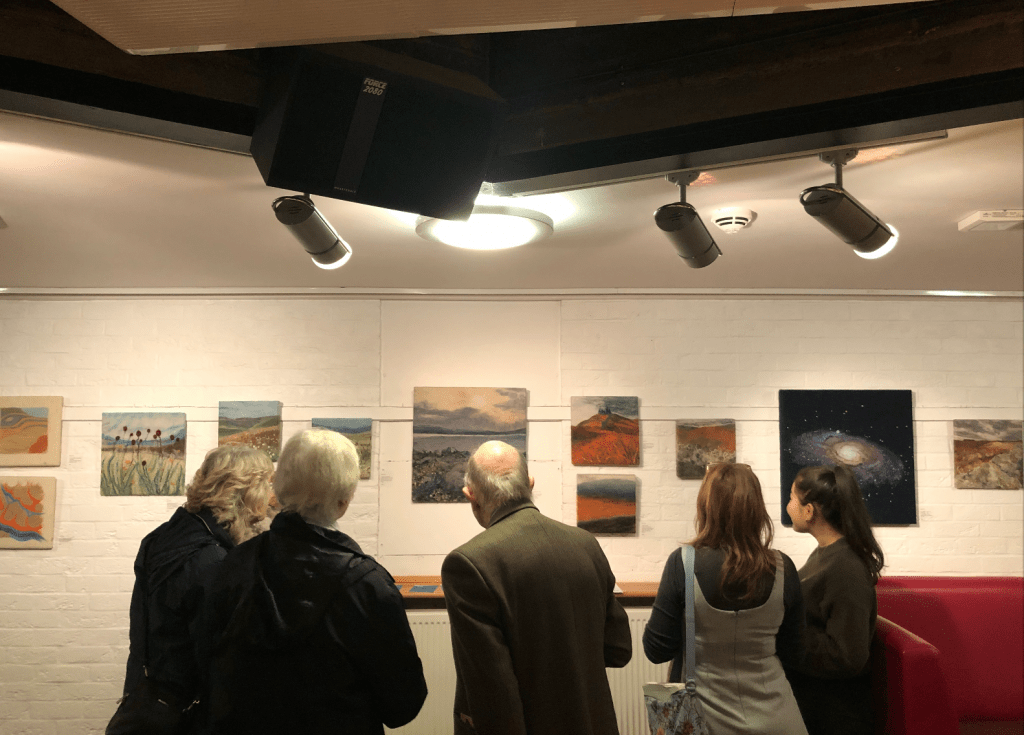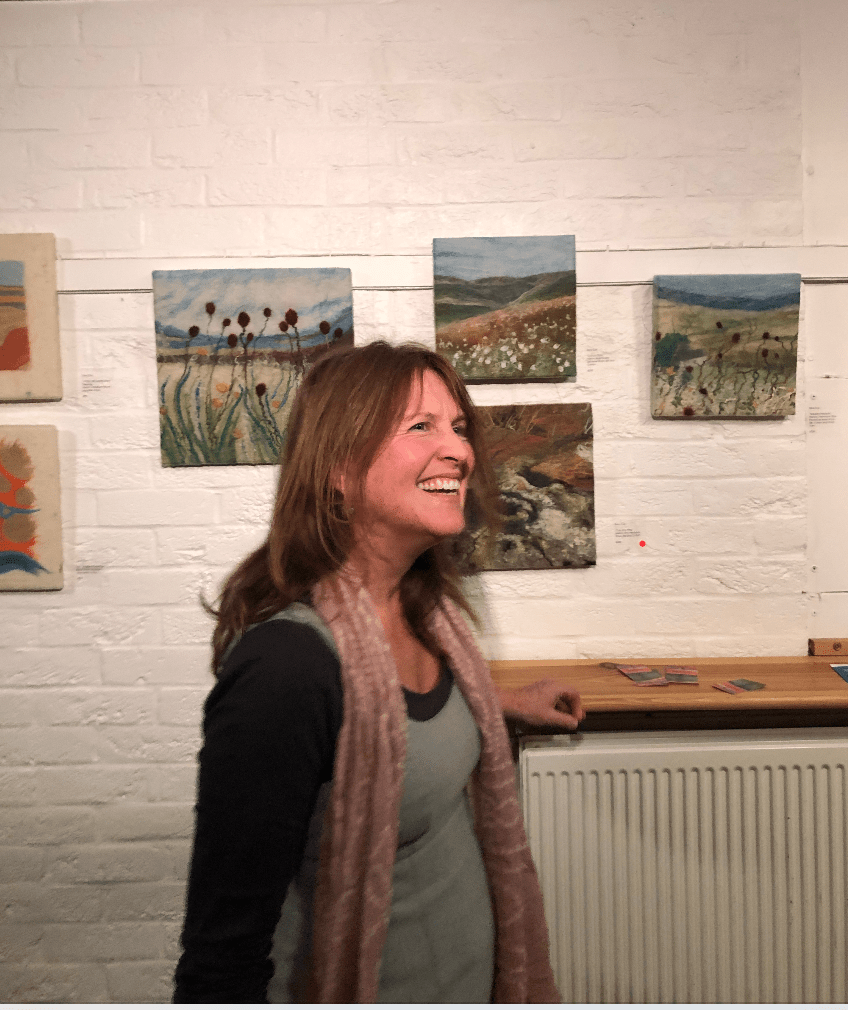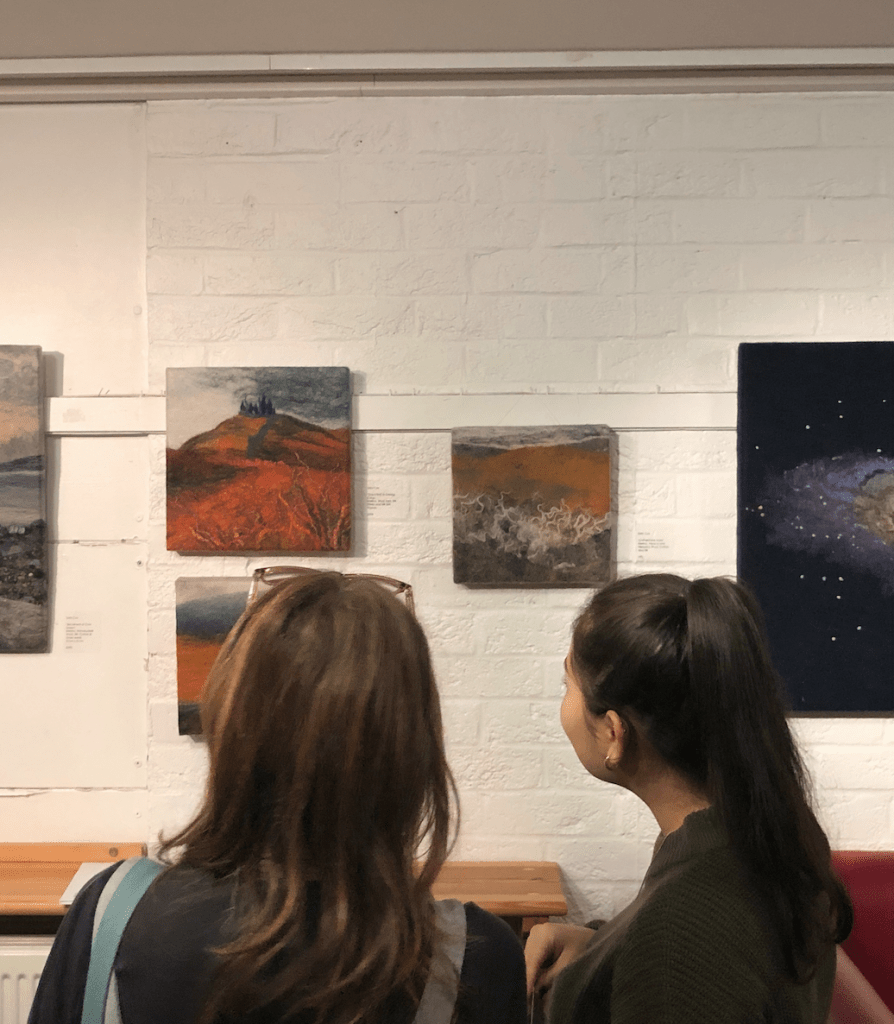In conversation with… Sara Cox
So… it’s the last couple of days of Trevelyan’s Visual Art’s Society’s exhibition: Elemental Layers. Ending this Friday, you have just two more days left to pop down and see the stunning artwork on display! Located in Trev’s bar, why not finish off another hefty week of summatives with a well-deserved glass of wine and peruse of some wonderful works from the North East’s art scene?
This week, The Bubble is in conversation with Sara Cox. Hailing from Upper Teesdale, Sara has over 26 years of visual arts experience. She’s worked with more than 600 school-children and adults on Heritage Lottery funded projects, combining science, geography, geology and art whilst exploring the River Tees and the landscape around it. She’s currently working with different felting methods, making richly colourful and delicate wearable pieces, including gloves and hats, as well as landscape pictures. With each individual piece comes many creative possibilities – all part of her lifelong love of, and journey with, textiles and technique!
“Often using recycled or natural materials, and keen to encourage our innate creativity, my focus is on demystifying the creative process, helping others to find the freedom of self-expression, through learning a technique or just having fun making something.”
Sara’s work is bursting with colour and I was excited to talk to her about her inspiration and why she’s so excited about textile work…
The Bubble (B): So, first of all, can you tell me a little about what you’re displaying here today?
Sara Cox (S): Okay, so, these are felted textile pieces. Each piece is made from wool tops, which are just the fibres. You’ve got to lay down the fibres in the right position to create loads of layers made up of different colours, which creates your background. Then you add bits on top of that background layer to create the details for your picture, or your pattern, or whatever you’re trying to do. I’ve got boxes of different types of wools, all of different colours, boxes of silk ribbon, boxes of yarns, bits of all sorts of different silk fibres as well, so it’s a bit like walking into a treasure chest or a sweetshop when you’re in my house, because you’ve got all the different sorts of things to choose from! It’s all about surface decoration and basically collaging different things together.
B: So, what inspired each of these scenes? I see one of them is a solar system…
S: (Laughs) Yeah, I haven’t been there! That is the Andromeda Galaxy, which is the furthest object that you can see with the naked eye. (She gestures to another piece) and this one is called ‘Death of a Star’, which is an exploding star. All of these are inspired by the images that you can see in the book, which has all the voyager photos in. I started looking at that book when the University Physics department were looking for an artist to do some outreach work, which led me down a very interesting path, which I loved, since all the photos are all about colour. I didn’t get the job, but I got to do some lovely work as a result of that inspiration. Everything here is really colourful which reflects the importance of colour to me and the key role it plays in my work.
B: I agree! Your work is absolutely filled with colour! This one, for example, of the moors is so impressive! You seem to have got so much colour in a scene that I would expect to be rather barren…
S: Thank you! That moor there is from a local scene. All of these pictures, aside from the Space ones of course, are from Teesdale – my husband and I live in Upper Teesdale, and we go out walking up the Dale, along the river and in the hills surrounding it. It’s a very wild landscape that changes dramatically from season to season. All the scenes depicted here are from different days out – I’m down there, taking pictures of the wildflowers whilst we’re having a picnic! Quite often, there are farmers who cut the fields or farm, and you don’t get the wildflowers blooming, but on the moors it’s an entirely different story and you get the chance to experience the wilderness in all of its beauty. I think this area is so diverse; you’ve got the old stone walls, the peat bogs, the rolling hills of the Pennines, the heather. It’s a very interesting area in terms of the wildlife, very varied, and it creates a very particular landscape. If you live there, you love it!
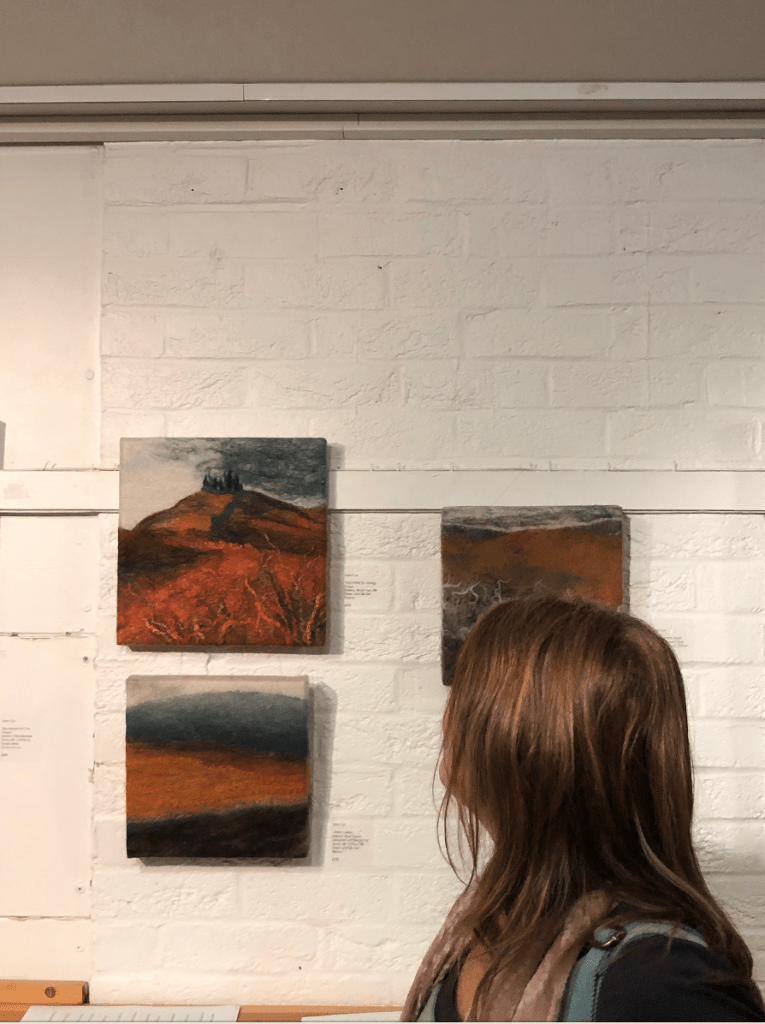 B: And the light you’ve captured!
B: And the light you’ve captured!
S: The light can be so dramatic! Bringing in silk in my pieces is a great way of highlighting and depicting where the sun is shining. It’s a bleak, remote landscape and I’m trying to show that in my pictures, but there’s also lots of colour. It’s about picking up the colours. Saying that, I’ve started to try and push those colours a bit and that’s why Carreg Caryn is very reddy-orange, rather than the dull green it is in the photo!
B: To spice it up!
S: Exactly! And I think that’s the way my work’s going. Some are very true to their original colours, but I know there’s a limited number of pictures I can do that strictly keep to the moor’s colours, which is why pictures like ‘Day’s End at Carreg Caryn’ come along – and there will be more of those! More drama, more abstract and more individuality!
B: Amazing! Can I ask a little about what drew you to this medium? Has it always been your medium?
S: I’ve always liked textiles. I’ve always loved the touch of silk, satin, velvet. As a teenager, I was always getting clothes and cutting them up. I had an old sewing machine and I used to upcycle clothes, using dressmaking techniques from my maternal grandmother. I can’t go into a charity shop without touching all the clothes and going ‘where’s the silk?’, ‘Here’s something that’s velvet, should I buy it? I might be able to alter it!’.
B: So what drew you particularly to felting?
S: I went on a felting course about 16 years ago and thought, oh I really like this! It’s a tactile thing and it’s the idea of making something from nothing. Taking a tangled up bunch of fibres and transforming them all into one of the pictures you see before you – there’s a magic in that. You can also work at a slow pace, laying things down, undoing things if they don’t work, there’s a freedom in that. You can swap elements around and being able to keep going and moving until you’re really happy with it.
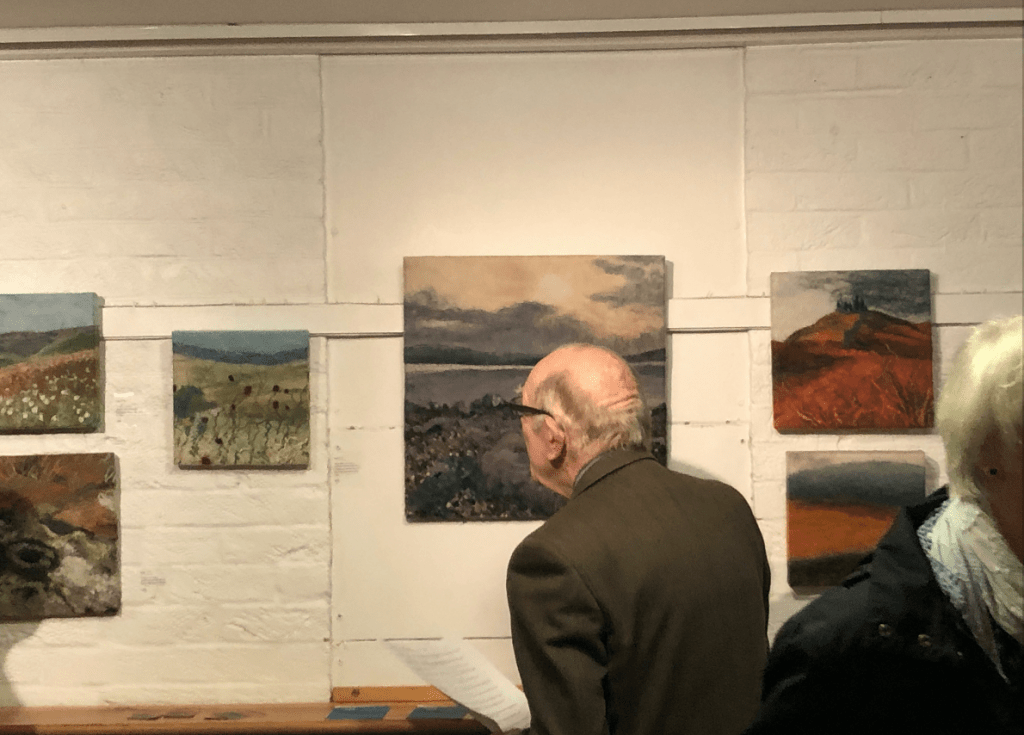 B: So, having talked about finding what you liked to do, how would you encourage students to find their own path, to discover what they really like doing?
B: So, having talked about finding what you liked to do, how would you encourage students to find their own path, to discover what they really like doing?
S: I think it’s about just noticing when you’re doing something whether it makes you happy and whether you want to relive that moment. Each artwork for me represents a really beautiful moment – both in the discovery of a scene out walking – and in the making of the piece itself. I don’t think about what’s going to sell, but what it means to me. It has to mean something to you, first of all, and then it has to be: do you like the medium you’re working with? It’s about finding what makes you feel completely absorbed and happy.
B: Great advice! Finally, what’s the best thing about being able to display at Trev’s?
S: It’s really nice to put all the stuff I’ve got together, and to stand back and see how they work. I’ve made every single piece and each piece has taken a long time. There are many hours represented here! It’s also nice to have the opportunity to hear what people think about them, how they affect people, and why they like it. Though, to be honest, if you’re doing something you really love, it doesn’t really matter if it sells or not. The best money for me, the best way of working, is by teaching it and running workshops. If I make something and it doesn’t sell for ages, it’s okay, it might sell next time! The most important thing for me is to make pieces you love.
To see Sara’s work in person, get up to Trev’s College Bar, where it’ll be exhibited until Friday 6th December.
To see more of her work in general, have a look at her Instagram or visit her page on the Teesdale Art Network website.
If you have any questions about the exhibition in general, or want to get involved in any future events, please contact Trev’s Visual Art Rep Amie via her email address: amie.kirby@durham.ac.uk.
All photography by Lara Grozdanic.
